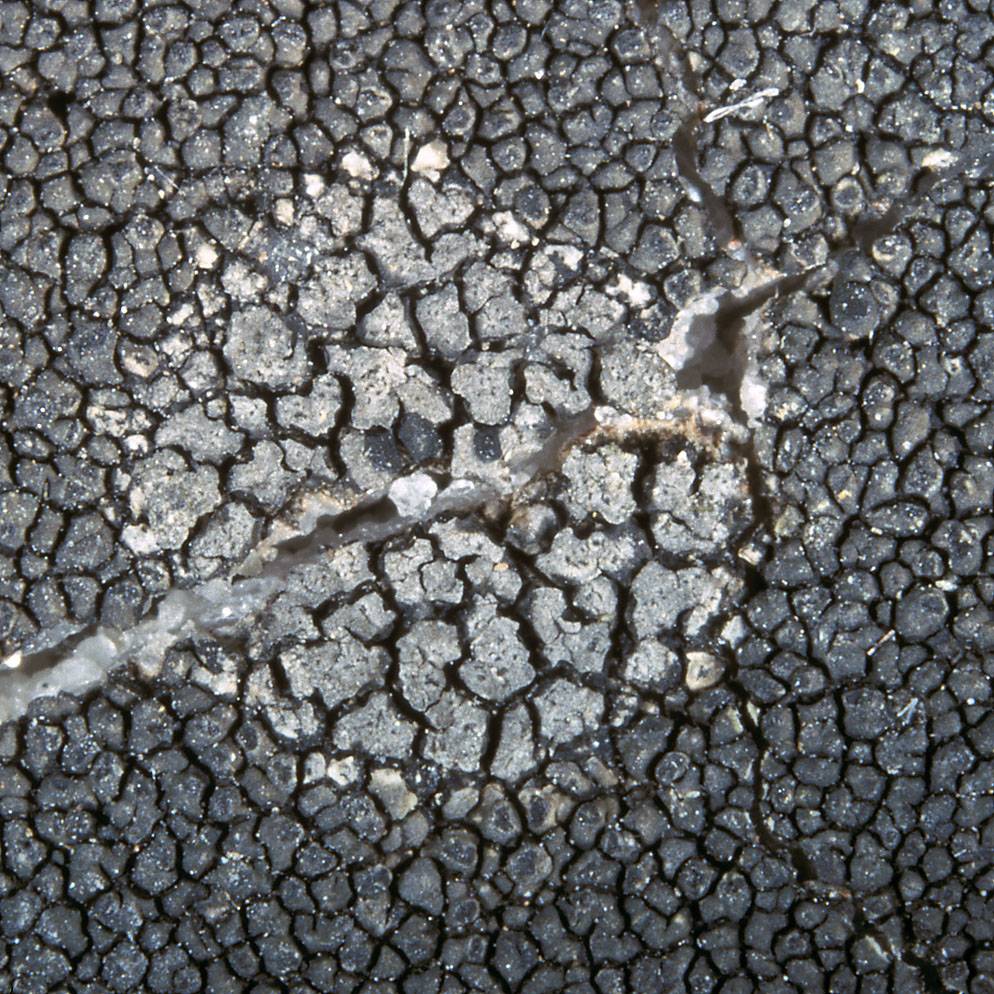
Consortium of Lichen Herbaria
- building a Global Consortium of Bryophytes and Lichens as keystones of cryptobiotic communities -
- Home
- Search
- Images
- Species Checklists
- US States: O-Z >
- US National Parks
- Central America
- South America
- US National Parks
- Southern Subpolar Region
|
|
|
|
Family: Caliciaceae
[Buellia lactea var. atrocinerea Anzi, moreLecidea uberior Nyl.] |
Nash, T.H., Ryan, B.D., Gries, C., Bungartz, F., (eds.) 2007. Lichen Flora of the Greater Sonoran Desert Region. Vol 3. Thallus: crustose, areolate, moderately thickened, ±continuous; prothallus absent surface: usually deep gray, rarely bluish gray, dull, epruinose, phenocorticate, esorediate medulla: white, lacking calcium oxalate (H2SO4-) Apothecia: lecideine; (0.1-)0.2-0.3(-0.4) mm in diam., remaining immersed margin: black, thin, rarely persistent, usually excluded with age disc: black, epruinose, plane, usually becoming slightly convex with age proper exciple: narrow, poorly differentiated, aethalea-type, inner excipular hyphae narrow, hyaline, prosoplectenchymatous (textura oblita), often reduced, similar in structure and orientation to the paraphyses, transient with the deep reddish brown hypothecium (leptoclinoides-brown, textura intricata), outer excipular hyphae parallel, moderately swollen (textura oblita) and usually strongly carbonized with various amounts of brown and aeruginose pigments (cf. elachista-brown and cinereorufa-green, HNO3+ violet) epihymenium: brown, pigmentation continuous with the outer exciple (HNO3+ violet) hymenium: hyaline, not inspersed with oil droplets; paraphyses: simple to moderately branched, apically swollen, with a brown pigment cap (cf. elachista-brown) asci: clavate, Bacidia-type, 8-spored ascospores: soon brown, 1-septate, broadly ellipsoid, usually not constricted, with obtuse ends, not curved, (8-)9.1-[10.1]-11.1(-14) x (4.5-)4.9-[5.6]-6.3(-7) µm (n=60); proper septum: narrow, not thickening during spore ontogeny (Buellia-type); ornamentation: striate (visible in DIC, but often inconspicuous) Pycnidia: unilocular; ontogeny similar to the Umbilicaria-type conidiogenous cells: mostly terminal, rarely also intercalary (cf. conidiophore-type V) conidia: bacilliform, 4.5-7 x 0.5-1 µm (n=20) Spot tests: K-, P-, C+ pink, KC+ pink (test the white medulla) fluorescence: UV- (dark) iodine reaction: medulla amyloid Secondary metabolites: gyrophoric acid, Scheidegger (1993) also reports stictic acid. Substrate and ecology: epilithic, in upper montane areas (forming distinct parasitic patches in Schaereria fuscocinerea (Nyl.) Clauzade & C. Roux; but occasionally forming independent thalli) World distribution: widely distributed the Northern Hemisphere and closely associated with its host Sonoran distribution: higher mountains of central and southeastern Arizona (Cochise and Gila Co.). Notes: In the Sonoran region, only parasitic material on Schaereria fuscocinerea has so far been observed. Nonparasitic type material of B. malmei from South America is anatomically, morphologically and chemically identical and possibly a rare form of B. uberior that develops independent thalli. The species is superficially extremely similar to B. miriquidica (see Scheidegger 1987), a species with smooth spores and miriquidic acid, not known from the Sonoran Region, but recently collected in North America (Maine, Mt. Katahdin) by A. Fryday (MSC). |
Powered by Symbiota














